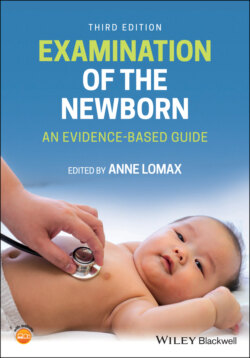Читать книгу Examination of the Newborn - Группа авторов - Страница 35
Maternal substance use
ОглавлениеMaternal substance use signals a probable newborn withdrawal process and a challenge to the health care team in establishing the exact nature of the drugs taken. In the first instance, the NIPE practitioner must establish what illicit drugs have been taken in pregnancy and the immediate pre‐labour period. However, obtaining an accurate substance use history is often fraught with imprecise maternal disclosures. Such behaviour can be linked to the social stigmatisation of drug use and the fear of the newborn being placed in care. Sensitive, but direct, further maternal questioning may be required, especially in cases of polysubstance use.
The withdrawal timelines for the common illicit substances have been well documented over recent years. Withdrawal from opiates and heroin can be evident in the newborn within hours of birth, whilst cocaine and amphetamine withdrawal begins within 48 hours of birth (Wang 2010) and withdrawal from methadone does not occur until 48–72 hours of age (Leggate 2008), but it can be as long as 7–14 days before withdrawal is evident (Lall 2008; Wang 2010). The longer half‐life of methadone is known to prolong and increase the severity of the withdrawal symptoms. Neonatal abstinence syndrome (NAS) is often considered the foremost adverse condition for the newborn of the substance misuse mother; however, the effects upon fetal brain development have far more significant and long‐lasting consequences. Substance use in the first 20 weeks of pregnancy can cause disruption in the cytogenesis and cell migration processes. In the subsequent weeks of pregnancy, cell differentiation and overall brain growth can be disturbed (Wang 2010), including midline defects and congenital heart defects (Mone et al. 2004).
